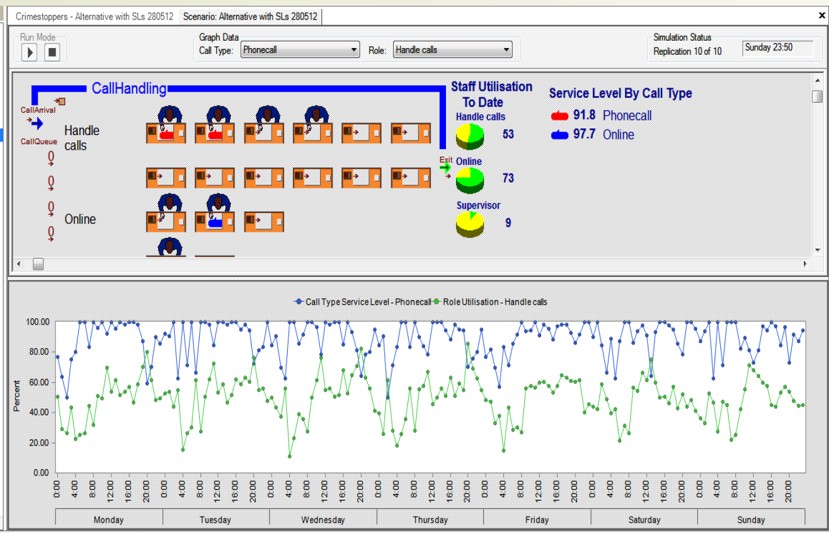Client: Crimestoppers: the charity which helps solve crime through members of the public providing information anonymously
Problem: Crimestoppers need to be able to provide a 24/7 service with a performance target of 90% of phone calls to be answered within 20 seconds. They were expecting a 60% increase in business. Their question was: how can we take on new business and improve performance without a big increase in staffing costs?
Approach:
Data on customer contacts (both phone calls and online forms) was collected and analysed, summarising arrival patterns by time of day, day of week, and time of year. A simulation model of the call centre was built, using PRISM software, based on three separate staff groups: call handlers, online staff and shift leaders. The model allowed phone calls to be diverted from call handlers to other staff at busy times. The model was validated using actual data on arrivals and staffing for a specific week and then used to explore the impact on KPIs of different proposed staffing patterns in close consultation with managers at Crimestoppers. The final agreed shift patterns indicated a 7% improvement in percentage of calls answered in target time, nearly 50% decrease in the number of abandoned calls, and a 40% decrease in the average time to answer a call without any increase in staffing costs. When the new shift patterns were introduced, the anticipated performance improvements were realised.

Benefits:
- Better performance without increasing cost, through new shift patterns
- Ability to continue to improve, and to adapt to changing circumstances, into the future
Client comment:
“We’ve benefited hugely from your work and support in all areas of the project, and from an organisational perspective you’ve enabled us to take a highly professional approach to increasing the efficiency of our charity” (Performance Manager)
Contact: Jane Parkin
